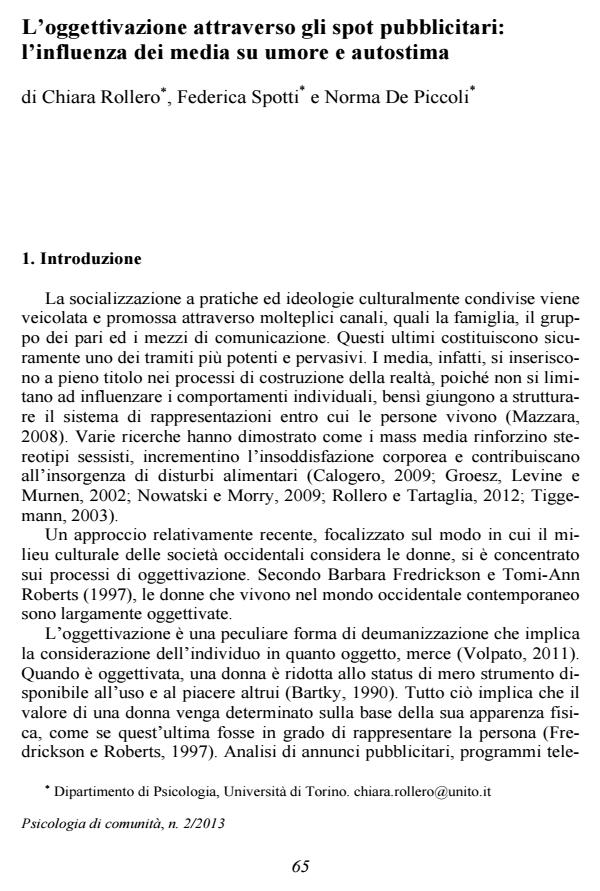Objectification through advertisements: the influence of mass media on mood and selfesteem
Journal title PSICOLOGIA DI COMUNITA’
Author/s Chiara Rollero
Publishing Year 2014 Issue 2013/2
Language Italian Pages 8 P. 65-72 File size 47 KB
DOI 10.3280/PSC2013-002008
DOI is like a bar code for intellectual property: to have more infomation
click here
Below, you can see the article first page
If you want to buy this article in PDF format, you can do it, following the instructions to buy download credits

FrancoAngeli is member of Publishers International Linking Association, Inc (PILA), a not-for-profit association which run the CrossRef service enabling links to and from online scholarly content.
Objectification is a specific form of dehumanization and implies that an individual is considered as an object, a body, and not as a person. Literature has largely shown that mass media play a key role in fostering objectification processes. Present study aimed at investigating the effects of exposure to objectifying advertisements, considering any effect on mood and self-esteem. 154 University students (53.2% males) participated in the study. Results showed that objectification decreases positive mood, especially when people are exposed to a same-sex model. Moreover, female objectification increases men’s social selfesteem. Implications are discussed.
Keywords: Objectification, advertisements, mood, self-esteem
Chiara Rollero, L’oggettivazione attraverso gli spot pubblicitari: l’influenza dei media su umore e autostima in "PSICOLOGIA DI COMUNITA’" 2/2013, pp 65-72, DOI: 10.3280/PSC2013-002008